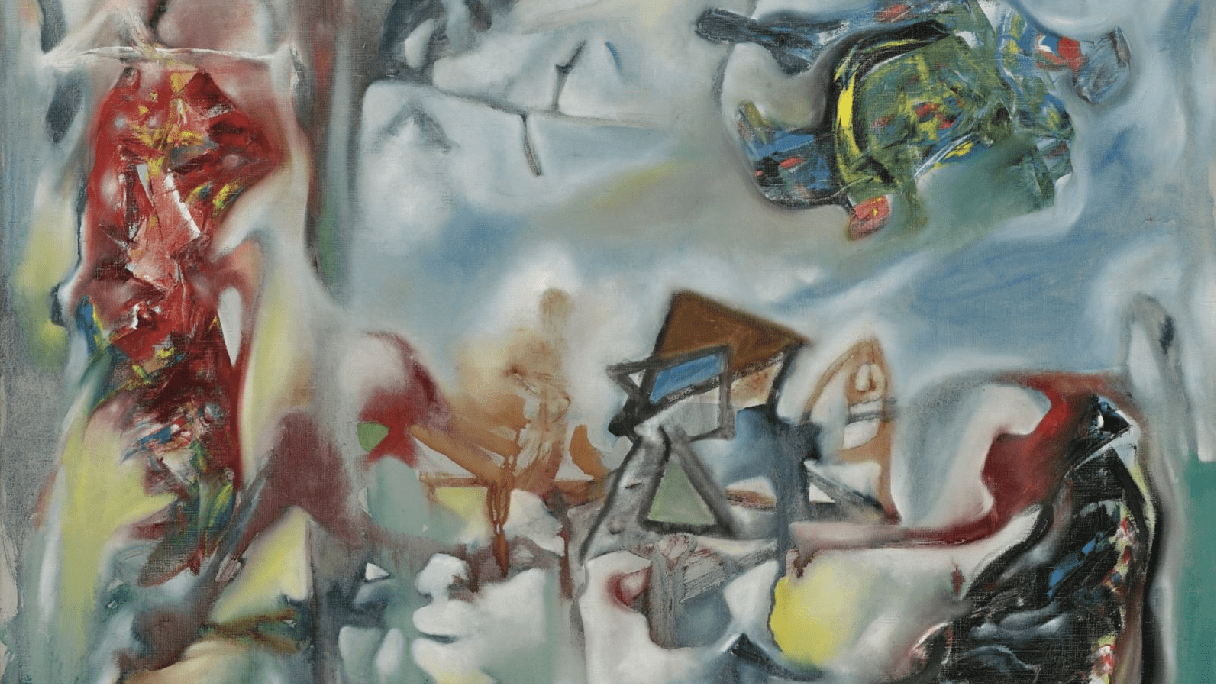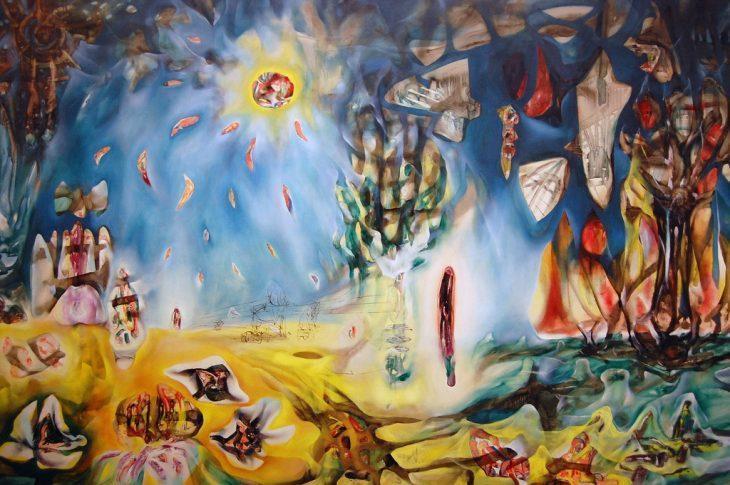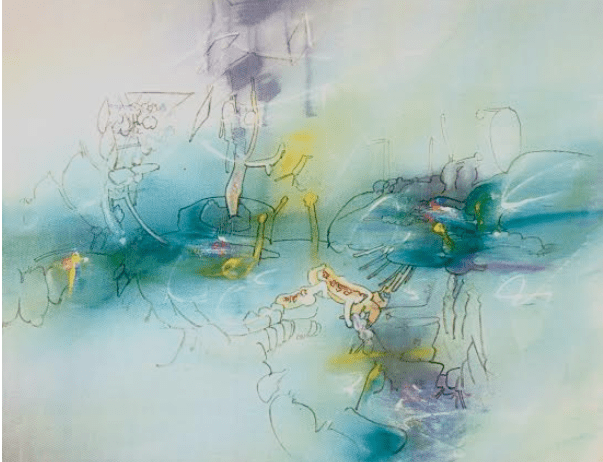Roberto Matta came from a wealthy family and was of Spanish and Basque descent. He studied at the Colegio del Sagrado Corazón (Sacred Heart college) in Santiago de Chile. There is some confusion about the dates relating to his early life at least up to 1939. He went on to study in the fine arts department at the Catholic University, specialising in architecture, and was awarded his degree in 1931. By 1928 he had opened an interior design firm in Santiago but in 1932 abandoned the enterprise to travel around Italy, Spain, Yugoslavia, Russia and England. He then went to Paris where he worked for a number of years at Le Corbusier’s firm, notably on the plans for the Cité Radieuse in Marseilles. He then worked in London with Gropius and Moholy-Nagy and met Henry Moore and Magritte there. By now Matta had become interested in esotericism and the work of Marcel Duchamp which he had discovered through the journal Cahiers d’Art. These two influences moved him in the direction of Surrealism.The Surrealists soon welcomed this articulate, provocative and charming artist, who always dressed in white, into their group. In 1937 he worked on the Spanish Pavilion for the International Exhibition and met Picasso. He went on to take part in the international Surrealist exhibition of 1938. With the start of World War II in 1939, Matta emigrated to New York with a flood of Surrealists and also Mondrian, Léger and Ozenfant. He again met up with Breton, the Surrealists and André Masson and made the acquaintance of Duchamp. Matta collaborated on the journals, View in 1941, VVV in 1942 and 1944 and took part in the First Papers of Surrealism exhibition. Almost as soon as he arrived in New York Matta enjoyed some success, holding his first solo exhibition there in 1940 at the J. Levy gallery; the Museum of Modern Art purchased his Listen to the Living ( Écoutez Vivre) in 1941. The same year he made a trip to Mexico, in the company of Motherwell, to study volcanic landscapes. By 1943, his stunning formal imagination, technical skill and fluid drawing style, combined with the automatic, frenzied, dynamic script of the Surrealists, became an influence on the early work of Arshile Gorky and led Jackson Pollock and Franz Kline to work with movement, with the body transcribing the interior, mediating urges of cosmic forces.In 1947, following his return to Paris, Matta designed the sets for Les Épiphanies by Henri Pichette, performed by Maria Casarès and Gérard Philippe. In 1948 Matta found himself ‘excluded’ from the Surrealist group after some obscure affair and moved to Rome, remaining there from 1949 to 1954. After this he led a somewhat nomadic existence divided between France and Italy. In 1963 he went to Cuba, returning there to exhibit in 1964; in 1963 and 1965 he went to the USA; in 1965 he went to Venezuela; in 1967 to the Cultural Congress in Cuba where, in 1982, he created the Art Museum of the Latino-African Man. In 1956 he executed an important mural painting, The Doubt of the Three Worlds for the UNESCO headquarters in Paris. In 1959 he was ‘reintegrated’ into the Surrealist group and to commemorate his return to grace he branded himself, perhaps as a sign of submission. In 1970 Matta saluted the election of Allende with a manifesto and after Allende was ousted from power took part in demonstrations. In 1974 Matta’s Chilean nationality was revoked.
In addition to his paintings, Matta also produced pastels and sculptures which were exhibited for the first time in 1960 at the Galerie du Dragon in Paris. He also worked as an engraver and illustrator.
From his trip to Mexico in 1941, Matta brought back the concept of ‘cosmic chaos’ and adopted the strident bursts of yellows, oranges and greens that would become a feature of his style. On his arrival in New York, building on the possibilities suggested by his earlier work, he began to produce major compositions which already exhibited his exceptional technical mastery: The Earth is a Man ( La Terre est un Homme) of 1941, The Apple of Knowledge ( La Pomme du Savoir) of 1943, To Escape the Absolute or Science, Conscience and Patience of the Vitreur of 1944 and Eros’ Vertigo of 1944. In these works colour becomes increasingly imponderable, more fluid, the appearance of forms more impalpable, a concrete expression of his determination to abandon earthly space for a ‘suggestive representation of the four-dimensional Universe’ – a description given to him by Breton and also corresonding with Duchamp’s obsession with the concept of the fourth dimension.
Together with the Mexican muralists and with Wifredo Lam, Torres García and others, Matta became one of the principal promoters of Latin-American art on the international stage. He managed to combine Surrealism and Abstraction by taking them on to a cosmic level. At the same time, with the revival of the science fiction cartoon strip, his work foreshadowed the later development of Pop Art.







